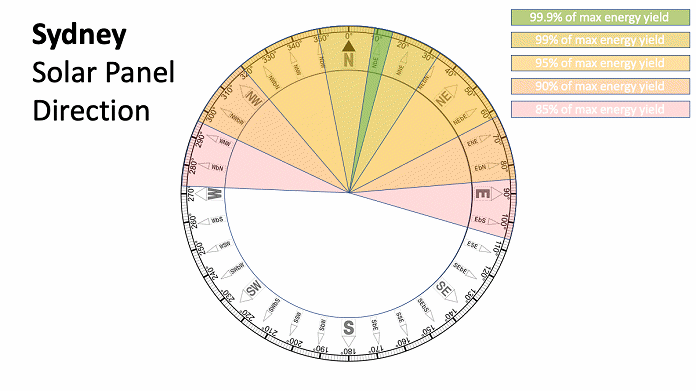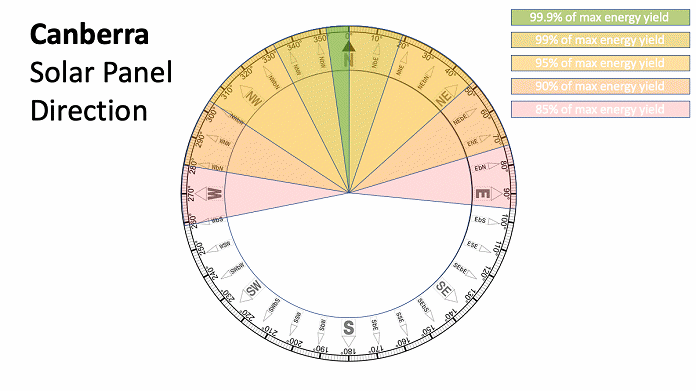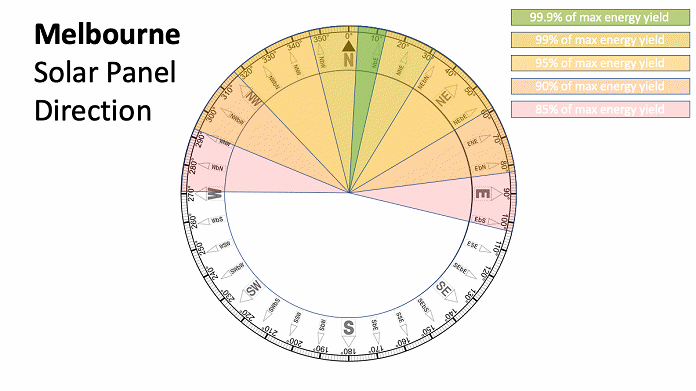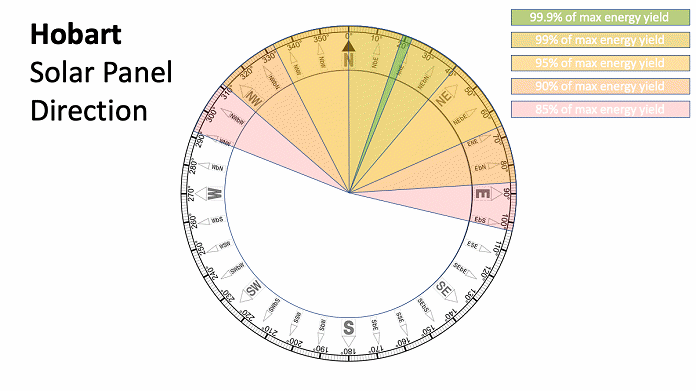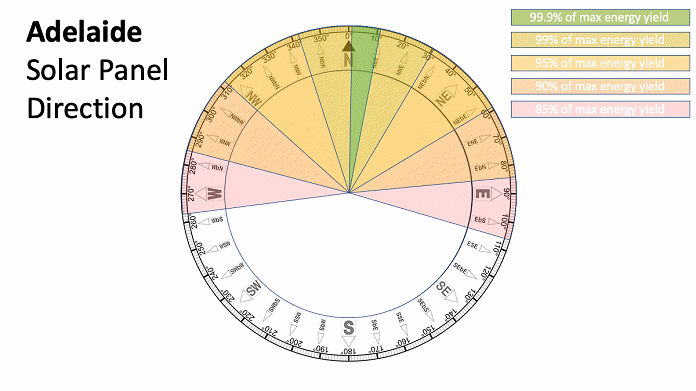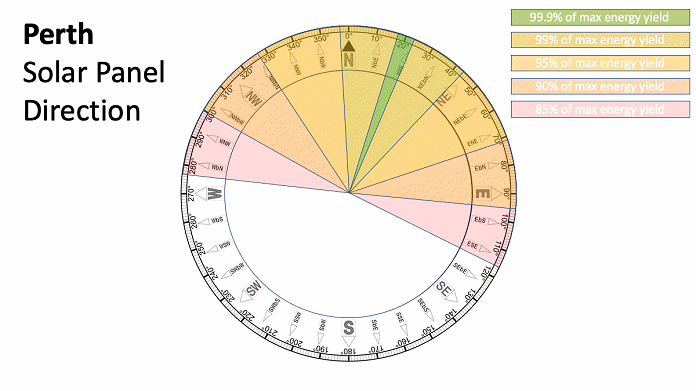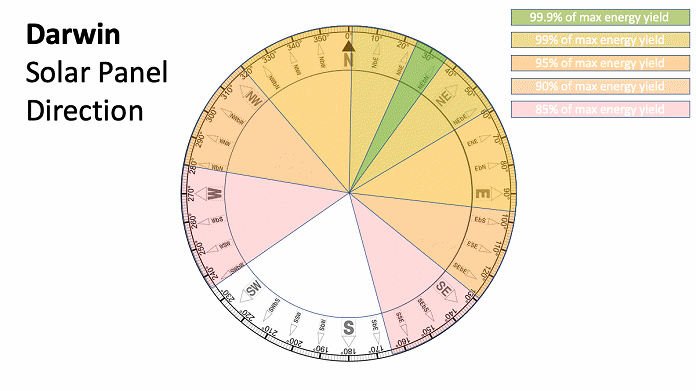Solar Panel Direction: Which way should my solar panels be facing?
Last Updated: 17th Jul 2024 By Finn Peacock, Chartered Electrical Engineer, Fact Checked By Ronald Brakels
Fifteen years ago, the question of which direction solar panels should face was easy. Feed-in tariffs were high and panels expensive, so they had to face north to maximise electricity production and earn the most feed-in tariff money possible.
But high feed-in tariffs are a thing of the past and solar panels are now far cheaper, so the question of orientation is more complicated. The most important thing to do now is maximize self-consumption. This is making sure your home uses the most solar electricity and the least grid electricity possible. The concept of self-consumption is the key to tiny electricity bills with solar panels – if you don’t know why, read this and then come back.
Using your own solar electricity instead of grid power is far more cost effective than receiving a low feed-in tariff for sending solar electricity into the grid. The more you are charged for grid electricity and the lower your solar feed-in tariff, the more important it becomes to maximise self-consumption.
Filling Your Roof Is Often The Best Arrangement
Because solar panels are so much cheaper than they used to be, my usual advice is to simply fill your roof and install as much solar capacity as will reasonably fit, regardless of direction. You may not think you’ll need that much, but in the future you’re likely to have a home battery and/or one or more electric cars, so filling the roof with solar is a great way to future proof your home.
But if your budget or other circumstances prevent you from taking this straightforward “all directions” approach – or your roof is so large it easily fits all the solar capacity your electricity distributor allows you to install with room to spare – I will explain how different panel directions affect output.
Which Solar Panel Direction Will Maximise Your Self Consumption?
The best panel direction to maximise self-consumption of solar electricity depends on a household’s electricity usage patterns. Panel directions and the type of households they generally best suit are given below:
North Orientation: Panels that face north produce the most electricity overall and can be the best choice for people who are at home during the day. Not only are they there to use electricity when it’s produced it’s also easy for them to shift demand by using washing machines, clothes dryers, pool filters and other devices in the middle of the day.
West Orientation: Panels facing west produce around 15% less electricity overall than north-facing ones. They also produce less electricity in the morning but more in the afternoon. Depending on roof slope, they generally reach their maximum output around one to one and a half hours after noon. One hour before sunset they’ll produce roughly one quarter of their peak maximum. West can be a good direction for people with high summer air conditioning demand. It is also an excellent direction for people who are usually out of the house by the time the sun comes up but return in the afternoon.
West-facing panels can be worthwhile if you have a variable feed-in tariff, as these increase the amount received for exported solar electricity in the late afternoon. For example, in Perth, the feed-in tariff is low for most of the day but increases to 10 cents after 3pm.
North-West Orientation: Solar panels facing north-west will produce around 5% less electricity overall than north-facing panels. Their electricity production through the day will be between that of north and west facing ones. They produce slightly more electricity during the afternoon and slightly less in the morning.
East Orientation: East-facing solar panels are similar to west-facing ones in producing around 15% less electricity overall than north-facing panels, but produce more electricity in the morning and less in the afternoon. They can suit households with high consumption in the morning, such as ones that use a lot of electric heating early on winter days or people who are out of the house in the afternoon.
North-east Orientation: Panels facing north-east will produce around 5% less electricity than north-facing solar panels and their production through the day will be between that of north-facing panels and east-facing ones.
East And West Orientation: Placing some solar panels facing east and some facing west will result in the total amount of electricity produced being around 15% less than if all the panels were placed facing north. This arrangement is often called an east/west split and has the advantage of producing a more constant output of electricity during the day, which can increase self-consumption. The steeper the roof, the smoother the system’s output will be.
An east/west split can suit people who are home through the day and households where people are at home in the morning and afternoon.
South Orientation: South is the worst direction solar panels can face. But because of how much they have fallen in price it’s still normally worthwhile. Of course, it still makes sense to first place panels in other directions if space is available.
In Sydney, south-facing panels typically produce around 30% less energy than north-facing ones. The steeper the roof, the less they’ll produce. They’ll also produce much more energy in summer than winter.
In the far north, the difference isn’t as great and in Townsville south-facing solar panels will only produce around 15% less energy overall than north-facing ones. Because Queenslanders generally use more electricity in summer than winter due to air conditioner demand, the fact that south-facing panels have considerably higher output in summer can improve self-consumption.
In Darwin, south-facing panels produce about 17% less electricity overall than north-facing ones, and, like in Townsville, they have considerably higher output in summer than winter.
Learn more about south-facing solar in Australia here.
Combining Directions: Panels can be placed in multiple directions other than just an east/west split. For example, some solar panels could be placed facing north and some facing west. This will result in an output similar to north-west facing panels. But you’re not limited to just two directions. They can be placed in every direction your roof makes possible.
Best Solar Panel Direction In Each Capital City
Clicking on one of the Australian capital cities below will display a compass image showing the optimum panel orientation for that city.
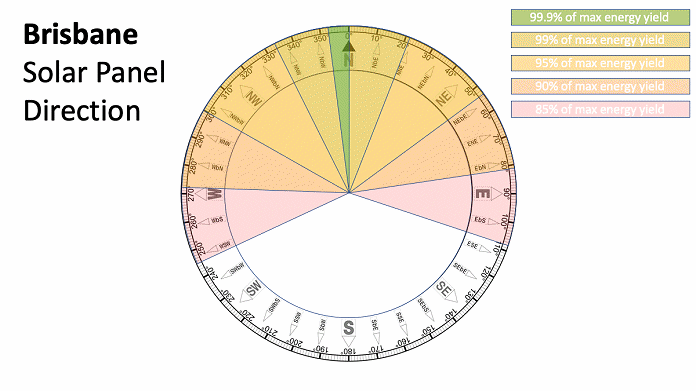
Power Loss Table: This table shows how much energy you can expect to get from almost any combination of solar panel direction and angle in the capital cities, compared to the 'optimum' orientation. For example, in Brisbane, if your panels are facing West (270°) and are angled 20° from horizontal, you will get 89% of the energy compared to the optimum orientation of North and 30°.
Brisbane Canberra Darwin Hobart Sydney Melbourne Adelaide Alice Springs Perth Cairns
| Panel Direction | Angle From Horizontal | |||||||||
|---|---|---|---|---|---|---|---|---|---|---|
| 0º | 10º | 20º | 30º | 40º | 50º | 60º | 70º | 80º | 90º | |
Panel Direction And Solar Inverters
The type of solar inverter you have affects how many directions you can place panels. The most common type in Australia are string inverters. Some small ones can only cope with solar panels facing a single direction, but most can handle two, three, or more directions at once. It's also possible to use two or more string inverters to increase the number of directions covered.
Microinverters and power optimisers are tiny devices attached to each solar panel. As they make each panel independent of the others you can face them in as many different directions as you like.
